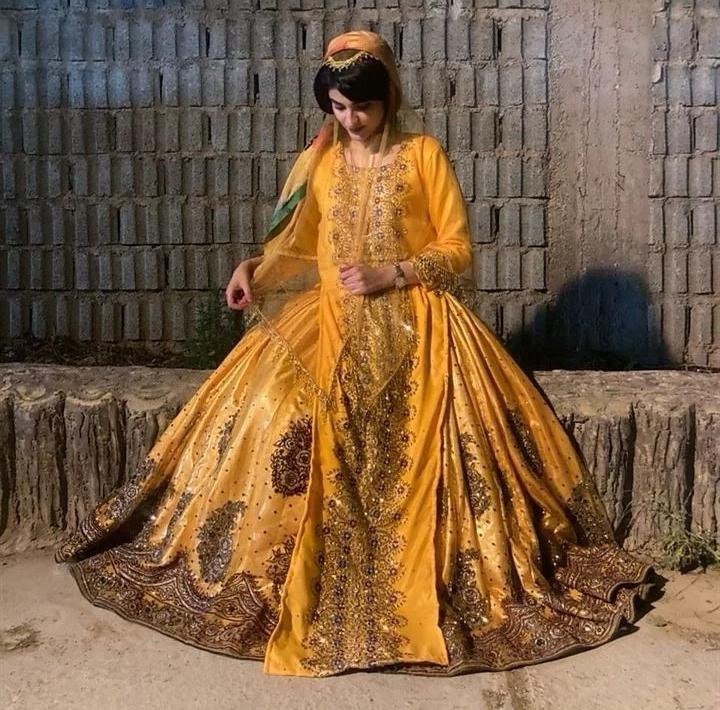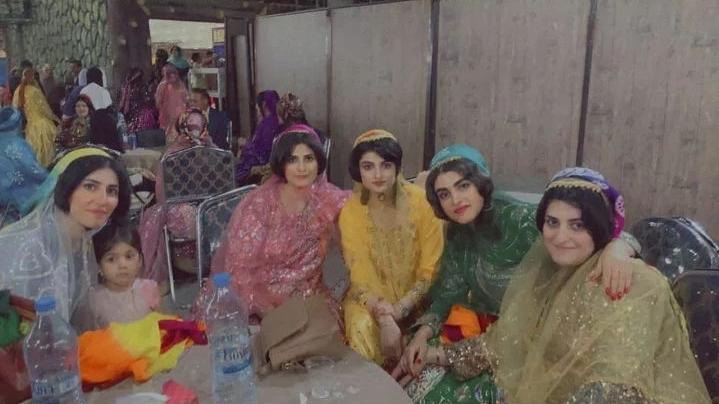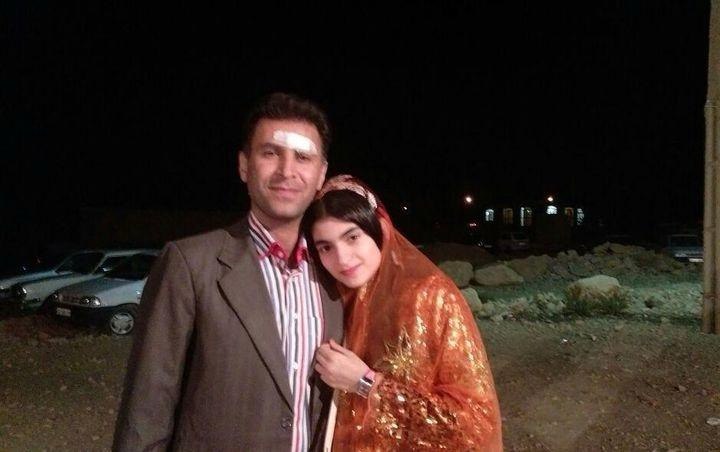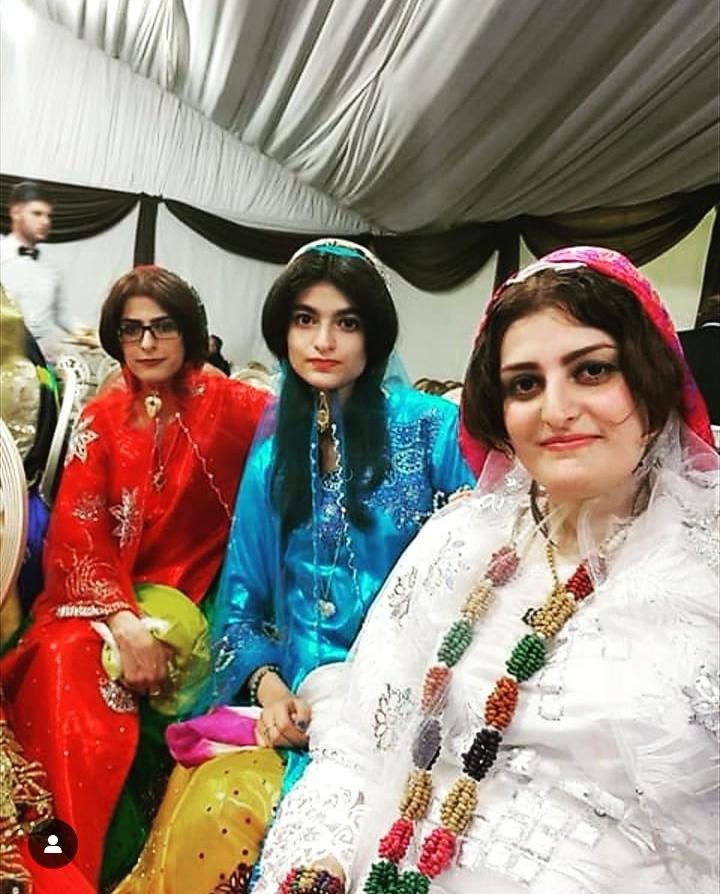Negar Abedi English Transcript
Interviewee: Negar Abedi
Interview date: August 20th, 2023
Interviewer: Zahra Falsafi
Where: Google meet
Length: 30 min 48 sec
Zahra: How old are you?
Negar: I am 22 years old.
Zahra: Where do you currently live?
Negar: In Iran, in the city of Shiraz, Fars province.
Zahra: Have you always lived here?
Negar: Yes, I’ve been here since childhood.
Zahra: What do you do for a living?
Negar: I am a veterinary assistant and a fashion design student.
Zahra: What type of education have you completed and where did you complete it?
Negar: I am currently studying for a Bachelor’s degree in Design and Sewing at Alzahra University. I have an Associate degree as well.
Zahra: What is your gender?
Negar: I am a woman, a girl.
Zahra: Are you in a relationship?
Negar: No, I am not in a relationship.
Zahra: Do you have children?
Negar: No.
Zahra: Can you tell me about your extended family? How big is it?
Negar: In terms of population, we are very, very, very large. Qashqais have been very committed to family marriages in the past, which has led to a large extended family. This has resulted in a high number of children and grandchildren.
Zahra: How much connection do you feel to your immediate or extended family?
Negar: Very closely because all our movements and interactions are tied to family.
Zahra: Where do they live?
Negar: In Shiraz and the surrounding villages.
Zahra: Do you have any physical disabilities?
Negar: No.
Zahra: What is the current income level of your household?
Negar: Average, ordinary, medium.
Zahra: Do you have religious affiliations?
Negar: Yes.
Zahra: What does being Qashqai mean to you?
Negar: It means being authentic. It means being pure and precisely authentic.
Zahra: Was there a time when you felt more or less Qashqai than others?
Negar: No, it has not happened to me.
Zahra: Have you ever felt negatively or positively about being Qashqai?
Negar: I haven’t had negative feelings. I’ve had positive feelings. It’s like a sense of pride, like an honor, like a kind of uniqueness, I would say.
Zahra: Tell us about your experiences with the Qashqai community. How are you involved?
Negar: Family. Yes, family, relatives, and the formal name that has been with us from the beginning, from the start of my life.
Zahra: What traditional clothes and accessories do you wear?
Negar: Well, we have a skirt. A very long skirt with a tunic on top, and we tie a belt around it. The bottom usually reaches our ankles. We have cloth pieces tied below the back of our skirts, called “paspache” and “dampache,” usually in black. We also have a long-sleeved shirt with a longer front and back, almost reaching our ankles. We have a chador with various decorations such as polka dots, tassels, and beads. We also wear a headscarf with different patterns that is placed on our heads for decoration. For accessories, we use rings, watches, and such in modern times. However, in the past, married women had a necklace called “mikhak,” which they wore to signify their married status, and brides were called “mikhak” when they were newly married. We also have a pin under the throat, connecting the two ends of the chador, usually worn by married women. This symbolizes that the bride’s father has taken it, signifying her married status. These are the traditional items that I can recall.
Zahra: What is the material of the clothes?
Negar: Our clothes can be made of various fabrics, from polka dots for our shirts to tulle for our skirts. It can be any fabric, as long as it is beautiful, because in our traditional clothing, the type of fabric is not emphasized. It’s more about their beauty and designs, so we can use any fabric that we like. Except for cotton fabrics, which can be considered a bit more formal, we can use them for traditional clothes.
Zahra: What colors do you wear?
Negar: Colors are a matter of personal preference, but generally, bright colors are worn. It also depends on the age group. For example, a woman who is fifty or older usually wouldn’t wear bright colors like red or orange. Instead, she might wear colors like beige or jade green. On the other hand, young girls aged 13-14 might wear red or yellow. However, it’s mostly a matter of personal choice.
Zahra: What jewelry do you wear?
Negar: Gold. A gold necklace, gold bracelets, a gold ring, and the pin I mentioned are also made of gold. If someone can’t afford gold, they use valuable jewelry such as silver or other precious metals. Additionally, I just remembered that we wear multiple skirts underneath our main skirts to add volume and enhance their beauty.
Zahra: Where do you get these clothes or accessories?
Negar: We buy them from places in the city like Vakil Bazaar in Shiraz or Firuzabad Bazaar in Firuzabad City. There are also fabric stores that sell traditional and elegant fabrics specifically designed for festive occasions.
Zahra: Do you make them yourself?
Negar: Yes, for example, we buy the four-sided skirt ourselves and decorate it with beads, tassels, or other ornaments. If we want, we can do the same for the skirts and shirts. If we have the skills and have been taught from the beginning, which is usually a little knowledge passed down from our mothers, we can make them ourselves. However, in modern times, the newer generation often goes to tailors, but the older generations used to do it themselves.
Zahra: Do others make them for you?
Negar: It depends on whether we want someone to make them for us or if we have the skill and passion to make them ourselves. It’s a matter of personal preference. If we are capable, we make them ourselves. If not, or if we don’t have the time, we give it to someone else to make.
Zahra: Have they been handed down to you?
Negar: Yes, it has been passed down from generation to generation in this way, from the clothing to the use of jewelry and accessories. It has been passed down from the beginning, from childhood.
Zahra: So, you learned it from your mother?
Negar: Yes.
Zahra: Do you ever buy them from a store?
Negar: We buy the fabric and then sew them ourselves, or we give it to a tailor to sew. We don’t buy ready-made clothes.
Zahra: So, you never buy ready-made clothes, you always buy the fabric and have it sewn according to your preferences?
Negar: Yes.
Zahra: Why do you get them from the places where you do them?
Negar: It holds a special value for us, and it’s not cheap. If I want to find a ready-made one and buy it, it can be very costly, but, you know… I don’t know how to put it… It’s like when you want to compare it to Nowruz, where people go shopping for items, prepare themselves, set the table. The ceremony itself is enjoyable for us. The arrangement, going to the market, buying fabric, negotiating the price, sewing, and preparing all of these things are enjoyable for us.
Zahra: What does traditional clothing mean to you?
Negar: It means… I can say it signifies authenticity for us. It represents having roots and, I don’t know how to put it, but it’s something we’ve been told since childhood. It has been ingrained in our minds since childhood, and it feels like with these clothes, with this authenticity, we have our roots, and it seems like our essence is tied to these clothes.
Zahra: Have these meanings changed over the course of your life?
Negar: For me, yes.
Zahra: When you are in different spaces or places, does the meaning of traditional clothing change?
Negar: No, because, you see, maybe in the past, our mothers would wear local clothes or Turkish clothes even at home, but it became routine for them. Wearing the same dress that we wear today at weddings for events such as funerals, going to the city, or going to the market has been normal for them. However, for me and for my generation, because this only happens in weddings, and we only wear traditional clothes during weddings, it doesn’t have a specific meaning. Probably, for our ancestors, every occasion had a special meaning for these clothes.
Zahra: Do you think some traditional clothes are more authentic than others? Why?
Negar: No, I don’t feel that. I feel that each traditional dress is authentic in its own way.
Zahra: I noticed in the interviews I conducted with others that recently, with the introduction of changes to Qashqai clothes, it seems like it’s separating a bit from the authenticity itself. What is your opinion on comparing the authentic Qashqai dress with the modifications they are making to make it somewhat more modern? In your opinion, which one is more authentic, and why?
Negar: I prefer the old dresses more, and I feel more authenticity in them because I feel like they have been there from the beginning, from the foundation. Now, they are making changes like making the sleeves wider, shortening the shirt, shortening the sleeves, or changing the way they tie the headscarf or the chador. But, in my opinion, the dress I first mentioned is more authentic and simple, and it is more valuable than the one they are making changes to. So, you think the untouched one is more authentic. Yes.
Zahra: Does getting it from a particular place make it more authentic?
Negar: It depends on where you get it, for example, between Shiraz and Firuzabad, as you mentioned, or maybe another city, it differs. It also differs in the type of fabric, the design of the fabric, and the diversity it has. The name and reputation that they have brought. For example, a certain market has gained a lot of reputation for its beautiful local clothes. If someone buys from that market, the chance that they will say their dress is more beautiful than someone who bought it from another market is higher.
Zahra: Can it become more authentic? Can you say that it is more authentic if you get it from a place where everyone goes?
Negar: No, it doesn’t become more authentic, but it becomes more beautiful because its authenticity is in the style of the dress, not necessarily in the fabric purchased from a store.
Zahra: Does using different materials or having someone specific make the dress make it more authentic?
Negar: No, it doesn’t make it more authentic, but it makes it more beautiful.
Zahra: If you wear the dress in different spaces, does it make it more authentic?
Negar: Yes, I think it makes it more authentic.
Zahra: Is there any part of “traditional” styles for any reason that you don’t wear?
Negar: Yes, for example, we have a short coat made of thick fabric called “Arqalagh” that is worn in cold weather. It’s very old, and people used to wear it a lot, but personally, I haven’t had it until now, and I haven’t used it. Because the weather has changed a bit, for example, I wear it in the cold atmosphere of a wedding hall, and there is no need for it. Also, it’s a very expensive expense. It’s so expensive that you can’t afford to buy and sew one piece for each dress. It’s not cost-effective, so it can be said that “Arqalagh” is being eliminated from Qashqai traditional clothing.
Zahra: How would you describe your feelings or attitude towards traditional clothes?
Negar: With power, beauty, authenticity, and uniqueness. Also, there are emotions.
Zahra: How do you describe your feelings when wearing traditional clothes, for example, during handicrafts?
Negar: It feels very good, a sense of authenticity, a sense of value, like a five-year-old girl wearing a princess dress. It has that kind of feeling.
Zahra: Does any of your other identities affect your feelings about your traditional clothing?
Negar: Personally, no. I am committed to Islam and what they have told me, and it’s in my mind. Islam is my religion, and in Islam, of course, they say that hijab is essential, but for me, wearing a chador and having visible hair is not a problem. There is no conflict between them, and I have no issue with it, or for example, if I become taller, shorter, or a bit chubby… You know, this dress is so authentic that it covers all of these.
Zahra: What information have you gained about traditional clothing from your interactions with others? (For example, has your mother taught you about different clothes?)
Negar: Exactly, it’s passed down from generation to generation. It’s something that has been passed down from a mother to her child, from a grandmother to her granddaughter. It’s something we grew up with, and they told us these things from the beginning, and with these beliefs and thoughts, we grew up, and we believe in them.
Zahra: What type of messages do you think society promotes about traditional clothing? How do you relate to those messages?
Negar: I haven’t seen anything like that on banners or in the streets until now. But, for example, there was a festival, and one of the booths was dedicated to traditional clothing. Ladies wore traditional clothes, and they rented out traditional clothes to those who wanted to wear them and take pictures with them. They set up a booth specifically for this. Or, for example, in our schools, during events such as Eid al-Fitr, Eid Nowruz, children who are Turk and have Qashqai clothes or traditional clothes are allowed to wear them for any province they are from and participate in the event. Other kids can see those clothes, take pictures with them, and admire them. So, to this extent, I have seen it, but not more.
Zahra: Are these festivals you attended at a specific time of the year?
Negar: In Shiraz, there is no specific time; it happens occasionally, by the request of the government or others, but it’s not like saying it happens every spring or every season.
Zahra: What barriers are there to obtaining and wearing traditional dress?
Negar: The high cost and the ceremonies involved in making it. Buying fabric and bringing it takes a lot of time. Also, the ceremonies of weddings where Qashqai dress should be worn are decreasing, and this itself makes it difficult to wear that dress less often and be restricted from wearing it.
Zahra: Can you share images of you wearing different traditional dress? As many as you’d like to share, but up to 10. For each image can you share: Where you are at in the image? Why are you wearing the traditional dress in that place? Is there any special meaning you have for this space or traditional dress in the image? )See Figures 1, 2, 3, 4, 5, and 6)
Negar: In all the photos, I am wearing a yellow dress, except for two.
Because it was a wedding and belonged to someone from the Qashqai tribe, and they said we should wear local clothes.
It gives a lot of sensitivity to femininity and a sense of belonging to a tribe.
Zahra: Is there anything else about you, your Qashqai identity, and traditional clothing that you would like to share?
Negar: About the clothes, no. But, regarding their customs and traditions, I think it may not be very relevant to you.







